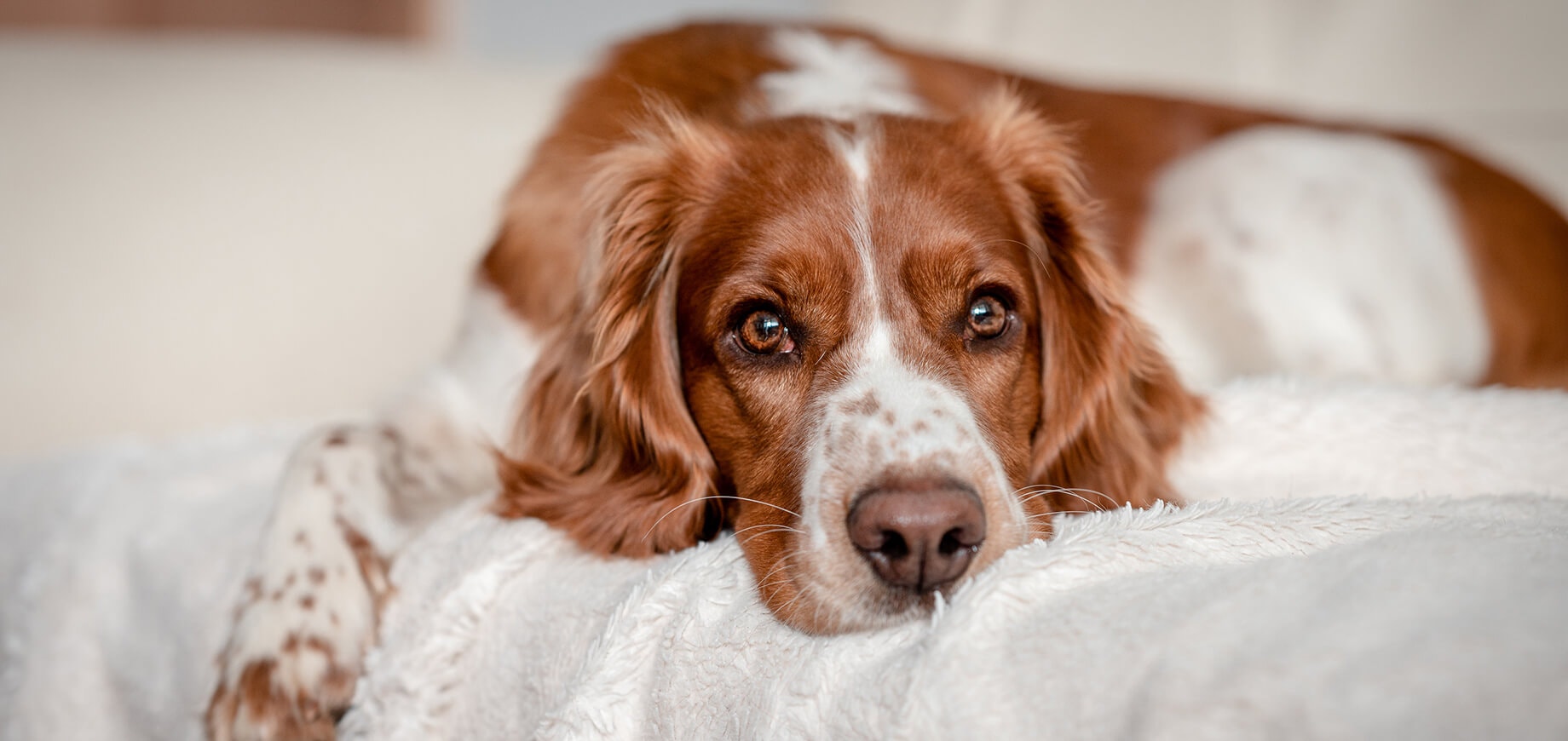

For many dog parents, separation anxiety is an unpleasant problem. It happens when dogs go into a state of extreme anxiety and distress when they are left alone.
You may observe destructive behaviour, whining, barking, or defecating indoors when you bring your pet inside. But this is not deliberate bad behaviour; it's a sign that your dog is struggling and highly stressed when left alone.
The good news is there are various things you can do as a pet parent to prevent separation anxiety when you can't be there.
In this article, we'll share everything about separation anxiety in dogs, signs, preventions, and treatments, so you know what to do when this happens.
There are several causes of separation anxiety in dogs.
Feelings of unease may surface in response to major life changes, like when you relocate to a new house, start a new job, or change the people currently residing in your home.
Early separation from their parents or littermates can increase the risk of separation anxiety in adult dogs.
One of the main reasons dogs develop separation anxiety is that they have not been left alone for small bursts of time regularly enough, so they have not become used to it.
Some medical issues can worsen anxiety in dogs and also look like separation anxiety symptoms.
'How long can you leave a dog alone?' is a question many worried dog parents ask.
Although it's a great question, there are different breeds of dogs, so there is no specific answer to that question. Generally, it's best never to leave your dog unattended for more than a few hours at a time.
However, it is advisable to get your dog used to being on its own for short, irregular, unpredictable bursts of time so that they know you come back and learn to be comfortable with it, knowing you'll return.
If you think there might be an underlying cause for your dog's separation anxiety, you should speak with your vet to help you find solutions.
There are several signs that dogs with separation anxiety normally exhibit. You should look for signs like:
Destructive Behaviours: When dogs are left alone, separation anxiety can cause them to chew on things like furniture, doors, or other items in your home. These behaviours are the result of frustration, boredom, or anxiety. They can even scratch doors and windows in an attempt to escape.
Vocalisation: Excessive barking, howling, or whining are common signs of separation anxiety. This can be particularly disturbing, not only for you but also for your neighbours. A dog with separation anxiety may make these sounds more at night when you're asleep in another part of the house. You should read our blog on 'dog anxiety and dogs barking at night.' to learn more about this.
Elimination Issues: If your dog is house trained, you may notice they are urinating or defecating indoors when experiencing separation anxiety. They're not doing this intentionally; it’s a sign of distress. Your dog may feel overwhelmed by their anxiety and lose control of their bladder or bowels.
Pacing or Restlessness: An inability to settle or relax when you're not around is another sign of separation anxiety. Your dog can frequently pace back and forth, whine, or show other signs of agitation.
Escape Attempts: Dogs with separation anxiety could also try escaping from their home. This can be dangerous, as it could lead to injury, while some even get lost.
Changes in Appetite: Some dogs with separation anxiety refuse to eat when left alone. This is usually a result of stress or a lack of interest in food when they feel anxious.
Self-Trauma: In severe cases, dogs with separation anxiety may resort to excessive licking or chewing at themselves. This is a way for them to cope with their anxiety, but it can also cause health problems like skin irritation or hair loss.
As a pet parent, it's important you know how to distinguish separation anxiety from other forms of stress or anxiety. You should speak with a vet if you have questions about your dog's behaviour. They can help you get to the bottom of this and find a solution.
One of the best ways to prevent separation anxiety is to prepare your dog from an early age. Socialisation is really important. You need to expose your puppy to people, sounds and even other dogs because this can help build their confidence.
This leads to a less anxious adult dog. Make sure these experiences are positive and fun for your dog. If they look scared, you can go back to something they are familiar with and try again later.
Teaching younger dogs positive behaviours and good habits is much easier. You can teach your dog how to stay calm using positive training techniques.
These early experiences or preparations can greatly reduce the risk of separation anxiety later in your dog's life.
You don't have to worry if your dog is already an adult. A lot of techniques that work for puppies can also help prevent anxiety in older dogs.
You can begin by gradually increasing the time you spend with your dog and also short absences if you have to leave them. Also, create a safe and comfortable space for your dog when you're away, such as a favourite room with a comfortable bed, his favourite toys, and treats.
As your dog ages, it's important you consult your vet to ensure the behaviour changes is actually due to separation anxiety and not a health condition.
Cognitive dysfunction, also similar to dementia in humans, can sometimes be mistaken for separation anxiety in older dogs. Symptoms like excessive barking, confusion, and accidents indoors might occur even when you're home.
Remember, even senior dogs who have never had separation anxiety issues can develop them in their later years. This might be due to feeling less secure as they age or due to physical conditions like arthritis.
You should also read our blog on crate training your dog.
Unfortunately, dogs don't get over separation anxiety on their own. It frequently becomes worse with time if not addressed.
A dog's intense fear of being alone and close bond to its pet parent are the underlying causes of true separation anxiety.
Although some dogs may have less severe discomfort symptoms as they age, the best way to address separation anxiety in dogs is through medication, behaviour modification, and proper training.
Treating separation anxiety in dogs often involves a combination of behaviour modification techniques, environmental changes, and sometimes medication for severe cases. Here are some effective ways to treat separation anxiety with the help of an experienced dog trainer or qualified behaviourist.
Gradual Desensitisation
This involves gradually increasing your dog's time alone, starting with very short absences and rewarding them for remaining calm. The goal is to teach your dog that being alone is safe and positive.
Counterconditioning
This technique focuses on creating positive associations when your dog is left alone. You can give your dog a special treat, like a puzzle toy filled with food or a long-lasting chew like Rancho, just before you leave. This will help them learn to relax and enjoy being alone.
Crate Training
If done correctly, an appropriately sized crate can provide your dog with a safe and secure space when you're not around. You should make the crate comfortable and inviting with treats and toys. Remember, a crate should never be used as punishment.
Environmental Enrichment
Provide your dog with plenty of mental and physical stimulation. You can do this with the help of Interactive toys, puzzle feeders, and regular exercise. These can help reduce your dog's anxiety and boredom. Leaving a radio or TV on low volume can help make your home sound normal. Also, leaving a light on if it becomes dark outside is a great comfort.
Calming Aids
It would help if you also considered using calming aids such as diffusers or calming supplements to help reduce your dog's anxiety levels and other training techniques.
A dog can be trained to overcome separation anxiety.
While it takes patience and consistency, using behaviour modification techniques, creating a positive experience for your dog when they are alone, and potentially medication for severe cases can all help your dog become more comfortable with being independent.
Addressing separation anxiety is a journey, but the right approach can significantly improve both your dog's well-being and your quality of life.
For further information and support, please visit our dog advice page for tips and resources on how to help your dog.

